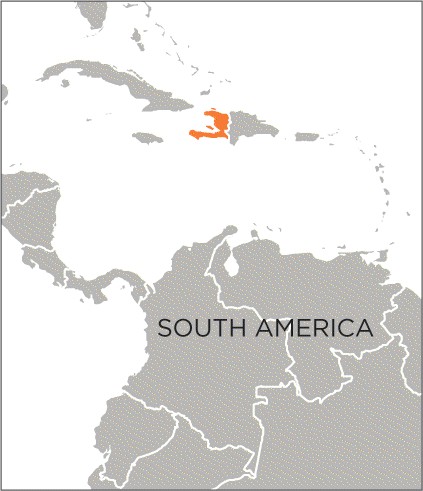Coffee probably came to Haiti from the island of Martinique, while it was a newly founded French colony in 1725. The first coffee was likely grown around Terroir Rouge in the northeast of the country; ten years later another coffee plantation appeared in the mountains in the north of Haiti. Coffee production rapidly increased on the island, and a number of sources claim that between 1750 and 1788, Haiti produced between fifty and sixty per cent of the world’s coffee.

The industry would reach its peak in 1788 and the following years of revolution, ultimately leading to independence in 1804, would see coffee production rapidly decline. The freeing of the slaves on the island didn’t just have an impact on the production of coffee, but also led to the country being ostracized in terms of international trade. However, the industry would slowly rebuild and see another peak in 1850 before receding again. Coffee production once again boomed in the 1940s and in 1949, Haiti produced one-third of the world’s coffee.
Coffee production, like many aspects of Haiti’s economy, suffered under the Duvalier regimes between 1957 and 1986, and natural disasters would play a role in further hampering the industry. The collapse of the International Coffee Agreement led to reports in 1990 of farmers choosing to burn their coffee trees to make charcoal to sell instead.
In the mid-1990s, an organization called Fédération des Associations Caféières Natives (FACN) was created. It would buy dried parchment coffee then mill it, sort it and blend it. The coffee had been washed rather than dry processed, and this was somewhat unusual.
It created a brand name called Haitian Bleu, referencing the colour of the raw coffee caused by the washing process, and controlled its route to market. In doing so it was, for a while, able to lift prices paid to growers. While not traceable in the way we expect speciality coffee to be today, it did create a premium around provenance and story. However, mismanagement of the organization led to declining volumes, and not meeting contracts with roasters led to the eventual decline and bankruptcy of the FACN.
 Bags of coffee lined up for collection in the streets of Portau-Prince. In the 1940s, Haiti produced one-third of the world’s coffee.
Bags of coffee lined up for collection in the streets of Portau-Prince. In the 1940s, Haiti produced one-third of the world’s coffee.
The earthquake in 2010 that devastated the island also devastated the coffee industry, which had already been in steady decline. Worth 1million. There was hope that coffee would play a role in the country’s economic recovery, alongside mangoes, the other major crop. Various NGOs (non-governmental organizations) have worked to invest in the industry, and while there is high-quality washed coffee being exported from the country, the industry remains very small and is growing slowly.
 Brewing coffee in Rivière Froide, in Haiti’s Ouest department.
Brewing coffee in Rivière Froide, in Haiti’s Ouest department.
TRACEABILITY
If you can find high-quality coffee from Haiti then it is going to come, most likely, from a cooperative of growers. There are no single estates selling coffee in the country. Haiti consumes almost as much coffee as it produces, so very little is exported.
TASTE PROFILE
Relatively full-bodied, earthy and sometimes spicy, with a little acidity – a typical ‘island coffee’ taste profile. Better lots have a soft sweetness.
GROWING REGIONS
Population: 10,847,000
Number of 60kg (132lb) bags in 2016: 350,000
The production of coffee in Haiti has dwindled to the point that it would not be accurate to describe it as having multiple growing regions.
| Altitude: | 300–2,000m (980–6,560ft) |
| Harvest: | August–March |
| Varieties: | Typica, Caturra, Bourbon |